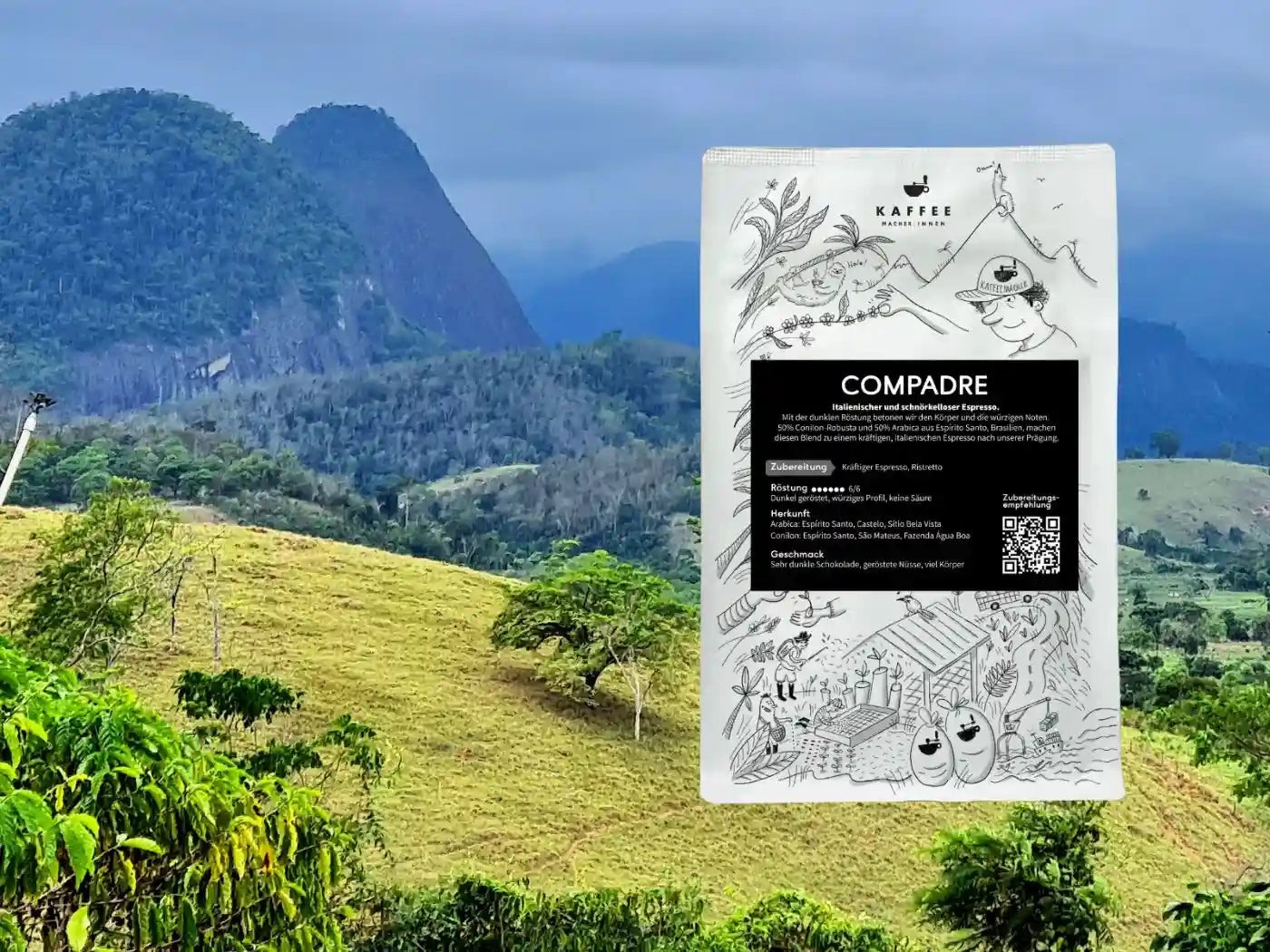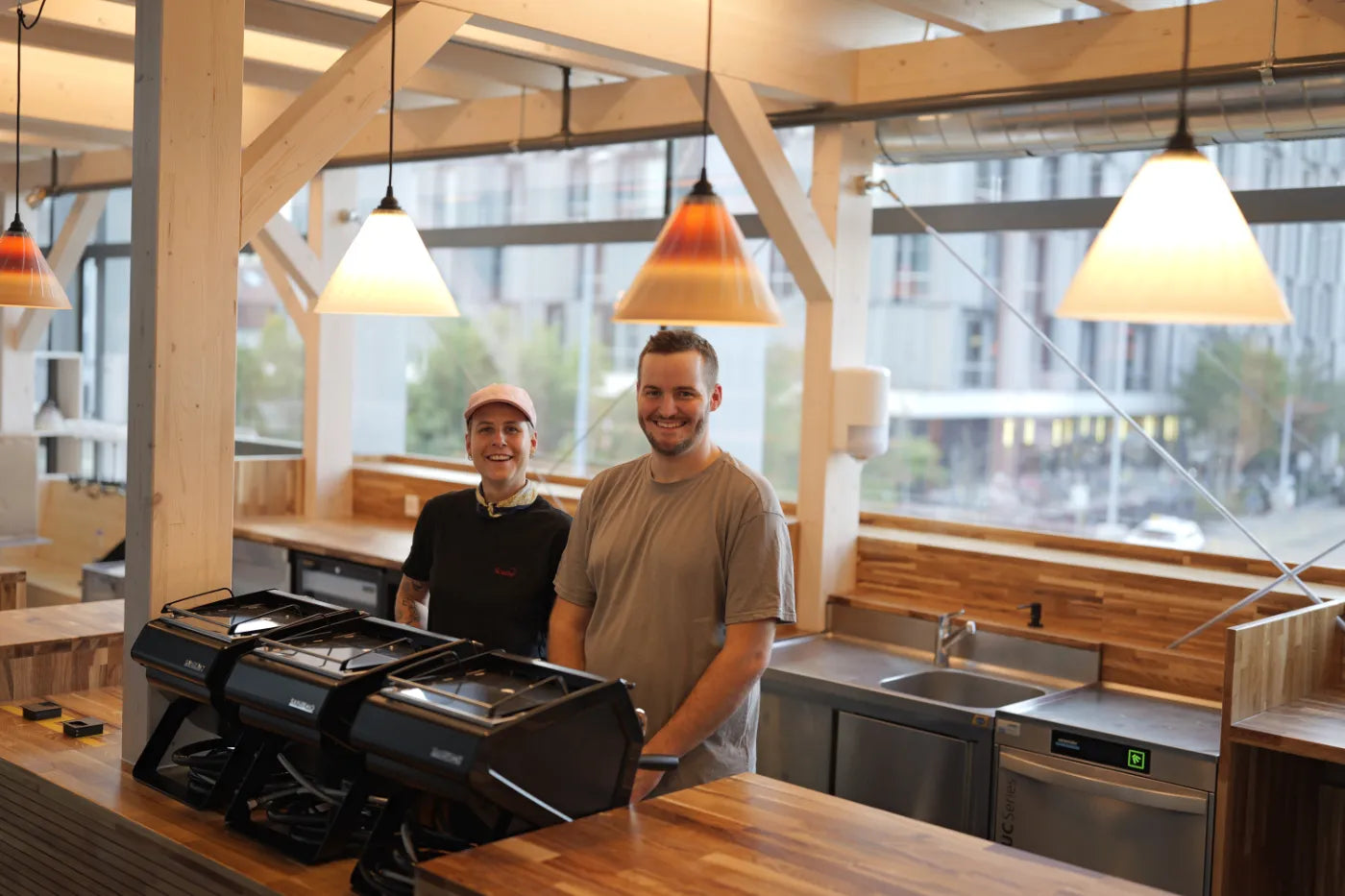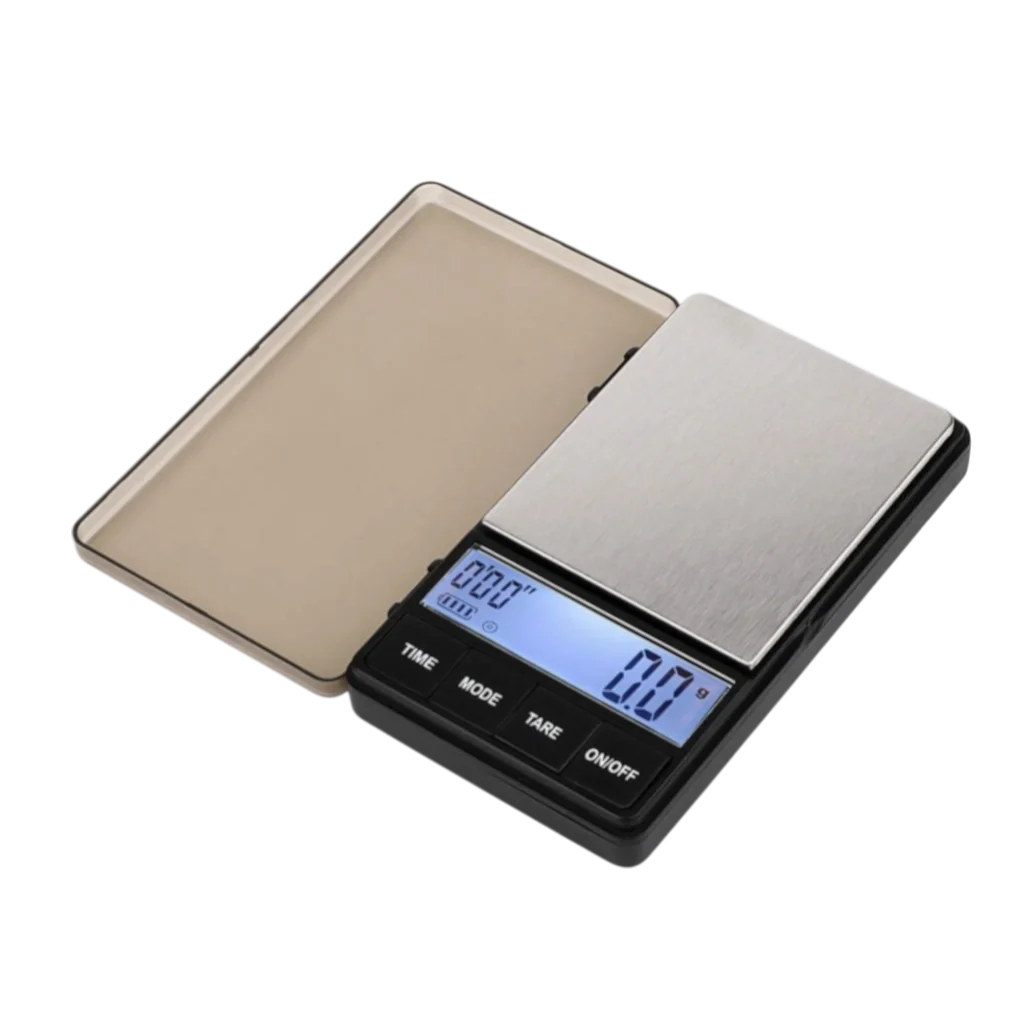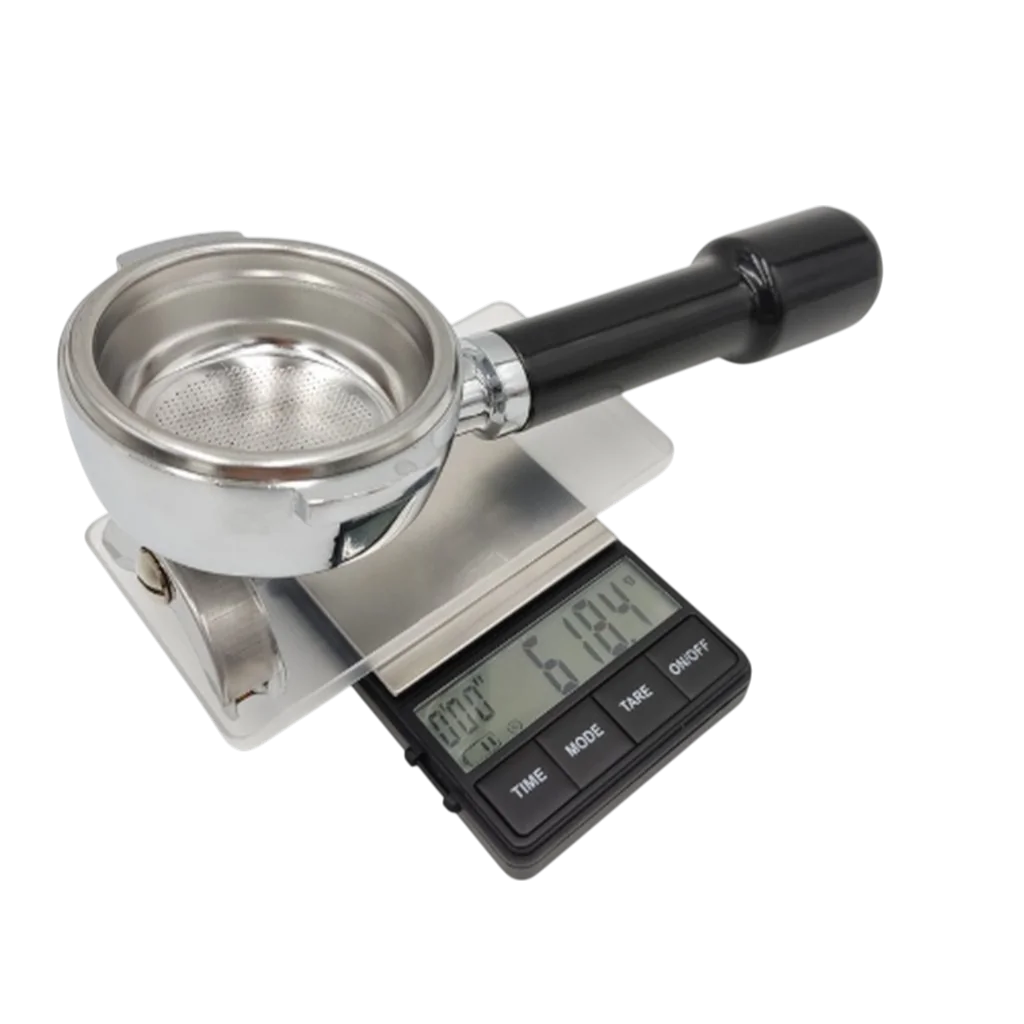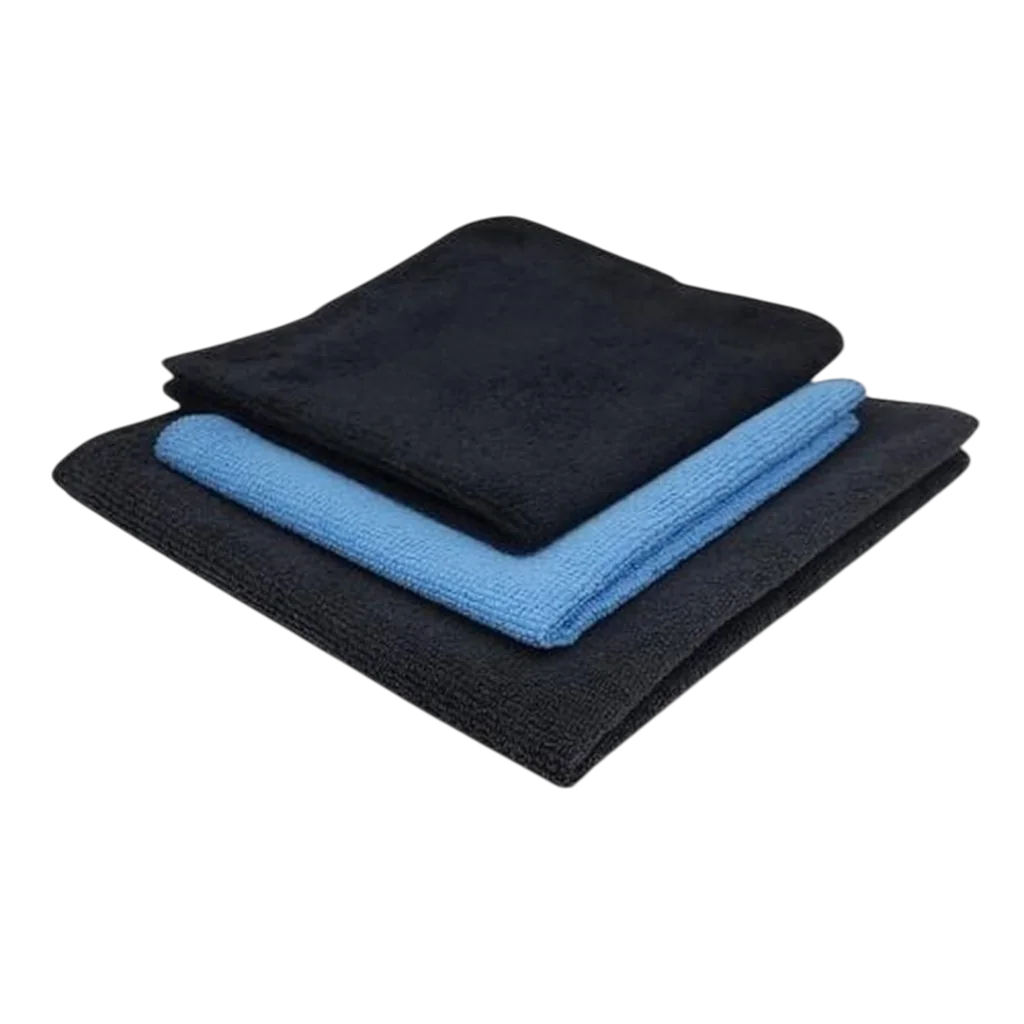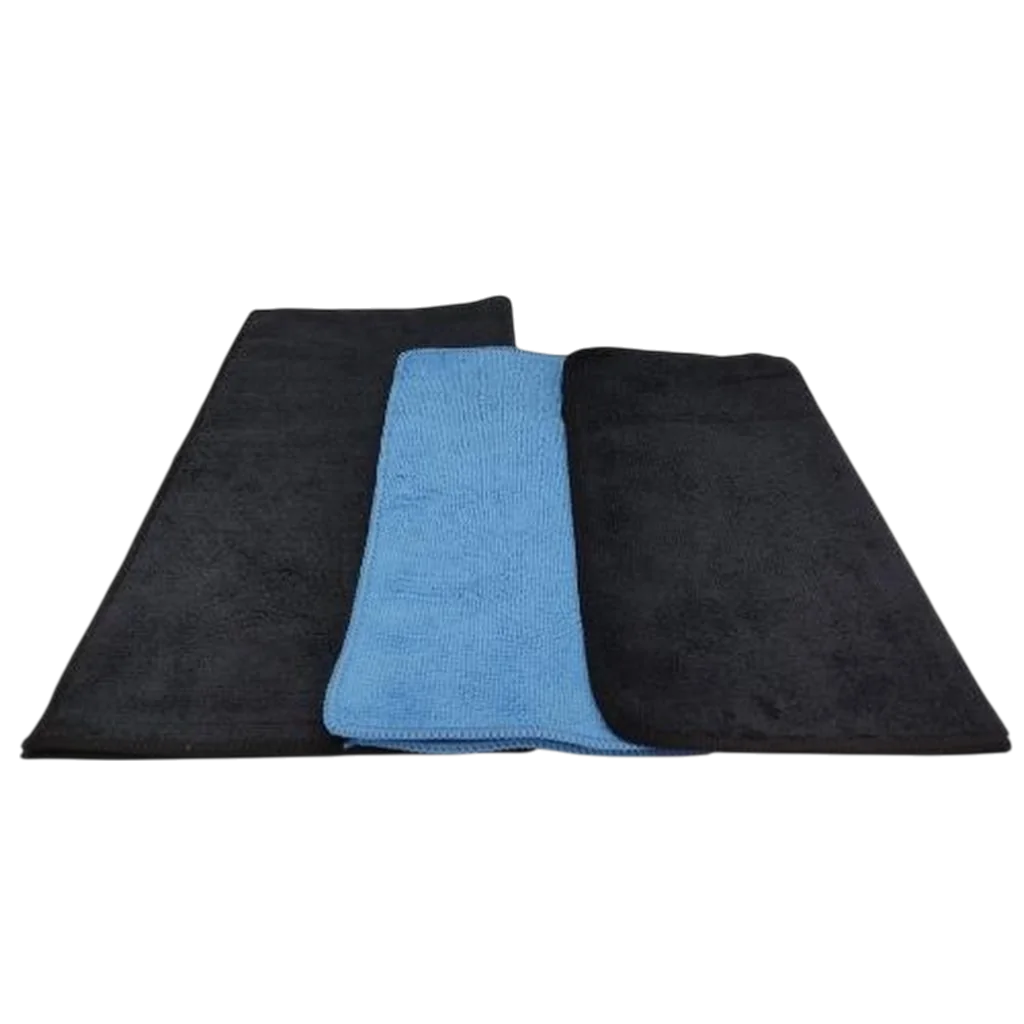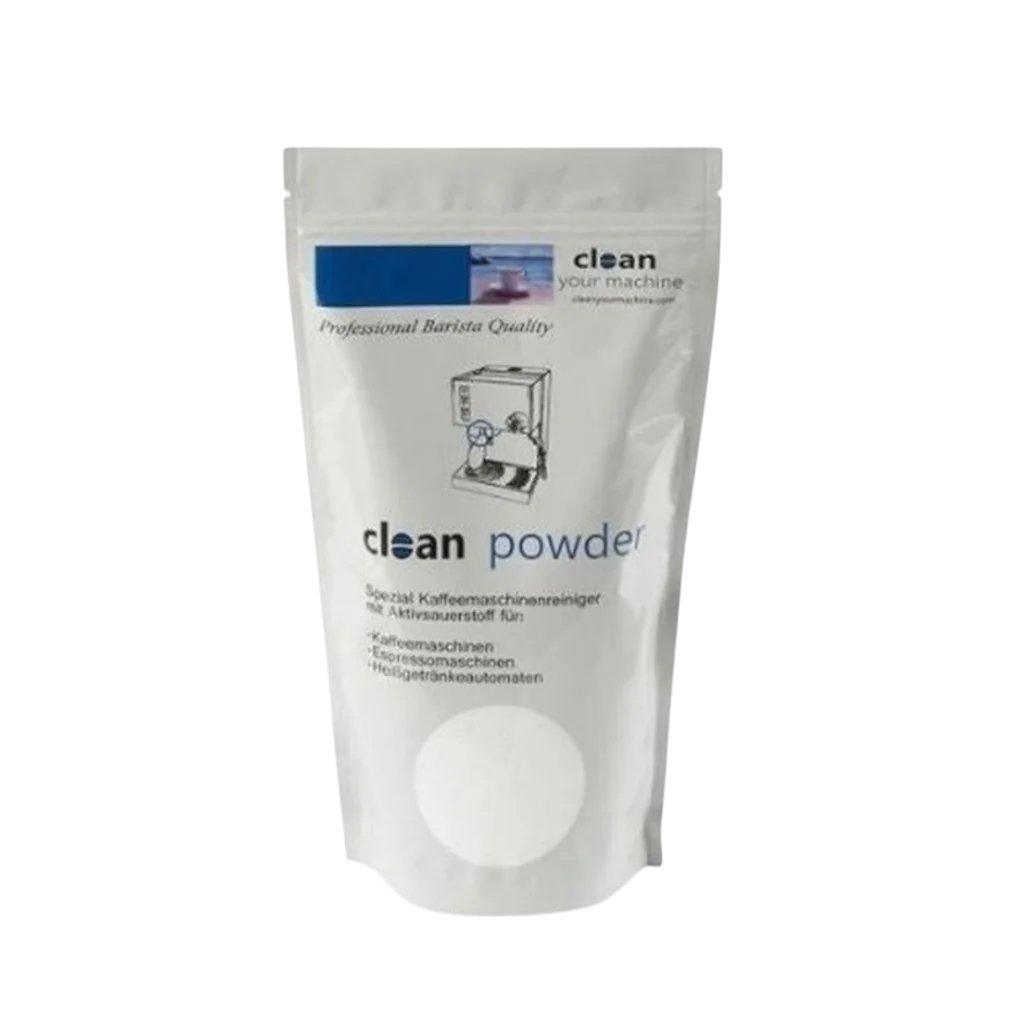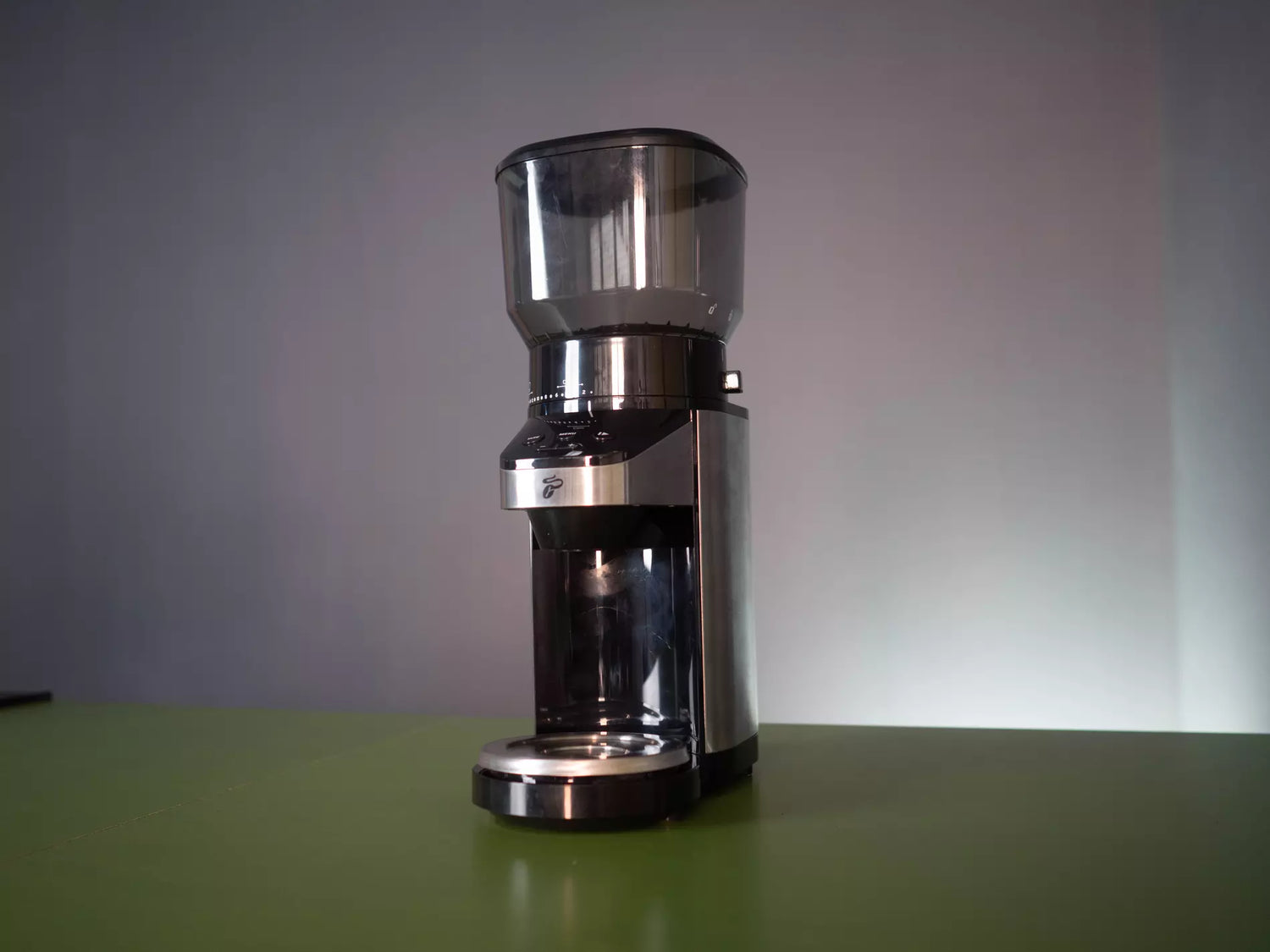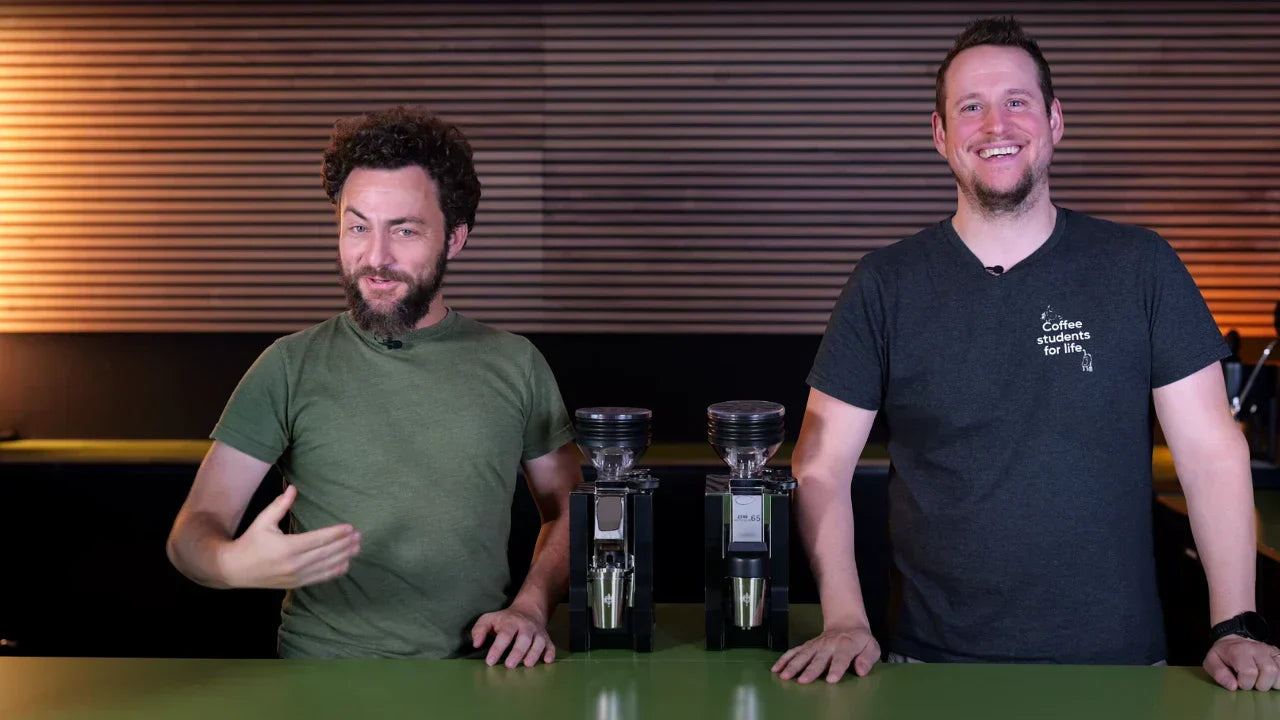Tchibo's electric coffee grinder with integrated scale, priced at under €100, makes it into the espresso grinder comparison. We tested the small grinder from Tchibo and share our impressions and findings in this review and video.
A coffee grinder with a scale makes sense!
With this electric coffee grinder, Tchibo has created something unique on the market. For under €100, this grinder comes with a scale. That's quite something, and the exception even for much more expensive grinders. Naturally, the question arises as to how well the scale works with the grinder. But before we answer that, let's briefly explain how it works and why it's actually quite ingenious.
Good coffee is often a matter of balance. Too much ground coffee prevents the water from sufficiently separating the brewing water. This results in a sharp acidity. Too little ground coffee in relation to water results in the coffee being over-separated. This often results in unpleasantly bitter notes – which is also not tasty.
This is why proportion is so important. While we typically work with a ratio of 1:2 or 1:2.5 for espresso , for example, 18 grams of coffee in the portafilter and 36 grams of espresso in the cup, we brew filter coffee with a different ratio. A ratio of 60 grams of coffee to one liter is recommended for making good filter coffee .
A scale is therefore one of the most important tools in coffee preparation, firstly to select the correct brewing ratio. Only secondarily are grind size, temperature, and pressure other important parameters.
It makes perfect sense for Tchibo to equip an entry-level grinder with a scale. The importance of the scale is emphasized and included directly. The decisive factor, of course, is whether the scale actually works.
How the scale works
The desired amount of coffee in grams or the desired cup size can be programmed on the grinder. The Tchibo grinder calculates 7 grams of coffee per cup. We place the grounds container on the scale integrated into the base plate of the grinder. The grinder tares the grounds container and begins grinding. It's nice that the grounds container can also be replaced with a smaller cup, for example, with our coffee maker measuring cup (available in the CH shop and in the DE/EU shop ).
Let's move on to accuracy, and this is where the good idea unfortunately vanishes. Tchibo itself states the accuracy as +/- 3 grams . In our measurements, we found a deviation of "only" 1.1 grams over ten extractions. This is better than Tchibo's own assessment. Compared to other grinders and in our comparison test, we rated values above one gram as "poor."
Especially when brewing espresso, fluctuations of 1 gram of coffee or more do not provide the reliability needed to prepare good espressos.

Size and appearance of the Tchibo coffee grinder
The Tchibo electric coffee grinder is small and compact. Measuring 14 cm wide, 35 cm high including the bean hopper, and 23 cm deep, the grinder weighs approximately 2.1 kg. The bean hopper holds up to 450 grams of coffee and is removable.
The exterior of the grinder is made of plastic and polished aluminum. The built-in conical grinder is very similar to other conical grinders in the affordable price range. 26 different grinding settings can be adjusted.
In addition to dosing based on cup size and coffee weight, a timer is also provided. In this mode, the grinder grinds for as long as desired.
The bean hopper removal feature is a truly clever solution. In the test video, professional barista Michel Aeschbacher expresses his delight at the fact that the hopper can be released at the touch of a button. With one simple movement, the upper section can be removed, leaving only 9.4 grams of unground coffee. This is an absolute best in our comparison.
Another positive is that the bean hopper can be unscrewed afterward without bumping into any beans. With many coffee and espresso grinders, you first have to remove the remaining beans before replacing the bean hopper. This is different with the Tchibo electric coffee grinder. We really liked that.

How does the espresso taste?
An espresso can only be good if it exists. This sounds logical, but unfortunately, it's not always the case with cheap and so-called espresso grinders. Many coffee grinders simply don't grind finely enough.
In our test, we also set the Tchibo grinder to the finest grind setting to achieve a fine enough ground distribution. The grounds are fine enough when they create enough resistance to slow the brewing water down to approximately 25 seconds during an espresso extraction. In other words, the desired amount of espresso should be brewed in approximately 25 seconds. This is a basic setting, which can then be adjusted by +/- 5 seconds depending on the coffee.
With the Tchibo coffee grinder, we managed brewing times of 22 seconds or more. Depending on the coffee and espresso machine, we also managed brewing times of 25 seconds. So, in principle, a corresponding grind fineness is possible.

The scale of the electric Tchibo grinder is located in the area for the ground coffee.
However, we're already at the finest range, and there's no room for further adjustment. Especially with coffees that may be a bit older, the grind setting won't be fine enough.
The espressos we tasted were clearly identifiable as espresso drinks. They had the typical thick texture and a certain heaviness on the tongue.
However, with the second and third sips, a distinct bitterness emerged, leading to a dry, astringent aftertaste. This flavor profile can also be well explained by the measured particle distribution of the grinder.
Particle distribution in the Tchibo coffee grinder

The particle distribution shows a relatively narrow main peak compared to espresso grinders in the same price range. However, the proportion of fine particles is relatively high. This may explain why an espresso setting was possible, but the dryness of the espresso predominated, especially in the aftertaste.
The best and highest-quality espresso grinders, above all, have a very high and sharp main peak. However, the Tchibo coffee grinder neither stands out from its competitors in this regard, either positively or negatively.
In terms of speed, the Tchibo grinder was among the slowest in the field. It ground 19.2 grams of espresso-sized coffee in 10 seconds.
The increase in ground coffee temperature over six extractions was also tested. The Tchibo grinder reached an average temperature of 35.7 degrees Celsius, increasing by 1.8 degrees Celsius from the first to the sixth grind. This was among the higher values, but should not yet lead to a change in the coffee's flavor due to the grinding temperature.

As can be seen from the grinding curves of tests 2, 4, 5, and 7, the particle distribution sometimes changes quite significantly. The graph above essentially shows the same recipe four times. In particular, the fines content jumped from, for example, 21 to 23%. These fluctuations provide an explanation for the repeated fluctuations in the taste results.
Conclusion on the Tchibo coffee grinder
Compared to other espresso grinders in price group 6 (up to €150), the Tchibo electric coffee grinder scores highly in several areas. We give the grinder a star for the idea of the scale. We deduct one star for the implementation of the scale. Overall, however, the usability is better than that of its competitors. The controls are easy to understand, and the bean hopper removal system is unmatched even in more expensive grinders.
The grinder is averagely loud at 81 decibels, but takes a very long time to grind the desired amount of coffee. The dead space , at 3.2 grams of coffee, is smaller than that of the Graef CM800 but larger than that of the Delonghi KG21 and the Rommelsbacher EKM300 .

The grinder grinds some coffees to espresso fine, but by then it's already at the finest setting. With many coffees, especially older coffees, the grinder doesn't grind to espresso fine.
We can't in good conscience recommend the Tchibo coffee grinder for espresso. Especially if the grinder is intended to pave the way for the fascinating world of espresso preparation, we find too many counterarguments. Above all, we fear that the grinder will be confusing for beginners when trying to adjust the correct grind setting. Therefore, we recommend spending a little more if possible, or taking a look at the hand grinders under €100 that we've tested.
Tip: Our esteemed colleague Arne from Coffeeness also took a look at the Tchibo coffee grinder.
![]()
